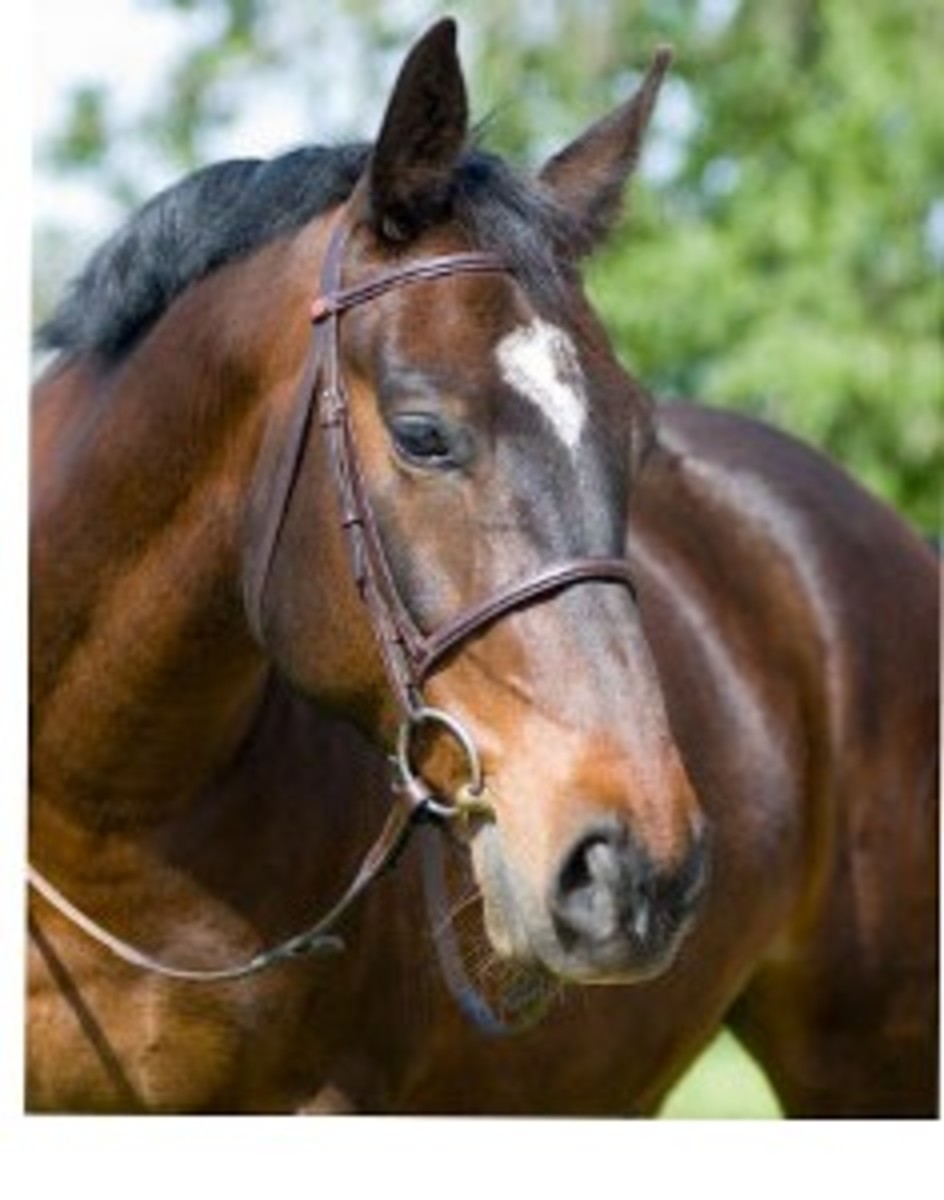In horses, the term “choke” is used to describe esophageal obstruction. Unlike choke in humans, it is usually not an extreme medical emergency because it occurs in the esophagus, not the windpipe. It blocks passage of food to the stomach, but it doesn’t cut off a horse’s breathing.

Choke most commonly occurs when horses either eat too fast or don’t chew their food sufficiently. This is particularly dangerous with pelleted grain and unsoaked beet pulp, both of which expand when moistened (by saliva) and thus risk getting caught in the esophagus. (Dry hay cubes can cause a similar problem; wetting them before feeding solves it.)
In most cases, the horse stands still in his stall, neither eating nor drinking, as large amounts of green, slimy discharge with food particles mixed in (what didn’t make it to his stomach because of the obstruction) come out of his nose. Some choking horses display obvious signs of pain, such as pawing and coughing–and may even appear panicked.
The most important thing to do is remove all food from his stall (his water can stay, though)–or put a muzzle on him. If he continues to eat, the food will pile up, filling the esophagus all the way up to his mouth. At this point, he risks aspirating his feed (breathing it into his lungs), which can lead to a secondary infection or pneumonia.
If you can feel a knot on the left side of his neck, below the throatlatch, there’s a small chance you can dislodge the obstruction by massaging it. You can also try rinsing his mouth with a garden hose, which will stimulate him to swallow and possibly clear the obstruction. You’ll know the problem’s resolved if he drinks water and nothing comes back out through his nose. If, however, he displays symptoms for more than an hour, call your veterinarian.
Very few choke cases require surgery. In most instances, administering a tranquilizer relaxes the esophagus enough to allow the obstruction to pass. Your veterinarian may also try passing a stomach tube down the horse’s throat and gently pumping fluids into it to loosen segments of the impaction until it is removed and the tube passes into the stomach freely. This must be done carefully; if used too forcefully, the stomach tube can damage the lining of the esophagus. (Trying to force the obstruction down with a stomach tube doesn’t work because the esophagus spasms around the obstruction.)
After an episode of choke, there is a danger of a recurrence within the next 72 hours. This is because the muscular layer of the esophagus has been stretched and can’t function normally until the inflammation subsides–so food passes slowly through the area and may pile up to form a new obstruction. This risk is temporary, however, and can be avoided by reducing the swelling with anti-inflammatories and feeding an easy-to-swallow gruel.
Longterm effects occur only if the esophagus is damaged–by the obstruction being stuck for too long, or by efforts to remove the obstruction (with a stomach tube, for instance). Very rarely, an obstruction may irritate the esophageal lining to the point where it forms an ulcer. When the ulcer heals, it causes irreparable constriction of the esophagus.
If your horse has experienced any of the above traumas, or if he’s a voracious eater, you may be able to prevent repeat chokes by changing his feed (to a non-pelleted grain, or by thoroughly soaking beet pulp or hay cubes) and/or by putting a few softball-sized rocks or pieces of brick in his feed tub to slow his eating.
A Diplomate of the American College of Veterinary Surgeons (ACVS), Dr. Bob Brusie graduated from Michigan State University School of Veterinary Medicine, completed his internship at Auburn University, and did his surgical residency at the Marion du Pont Scott Equine Medical Center. He specializes in surgery and lameness in hunters, jumpers and dressage horses at the Palm Beach Equine Clinic in Wellington, Fla.
This article first appeared in the September 2000 issue of Practical Horseman magazine.











